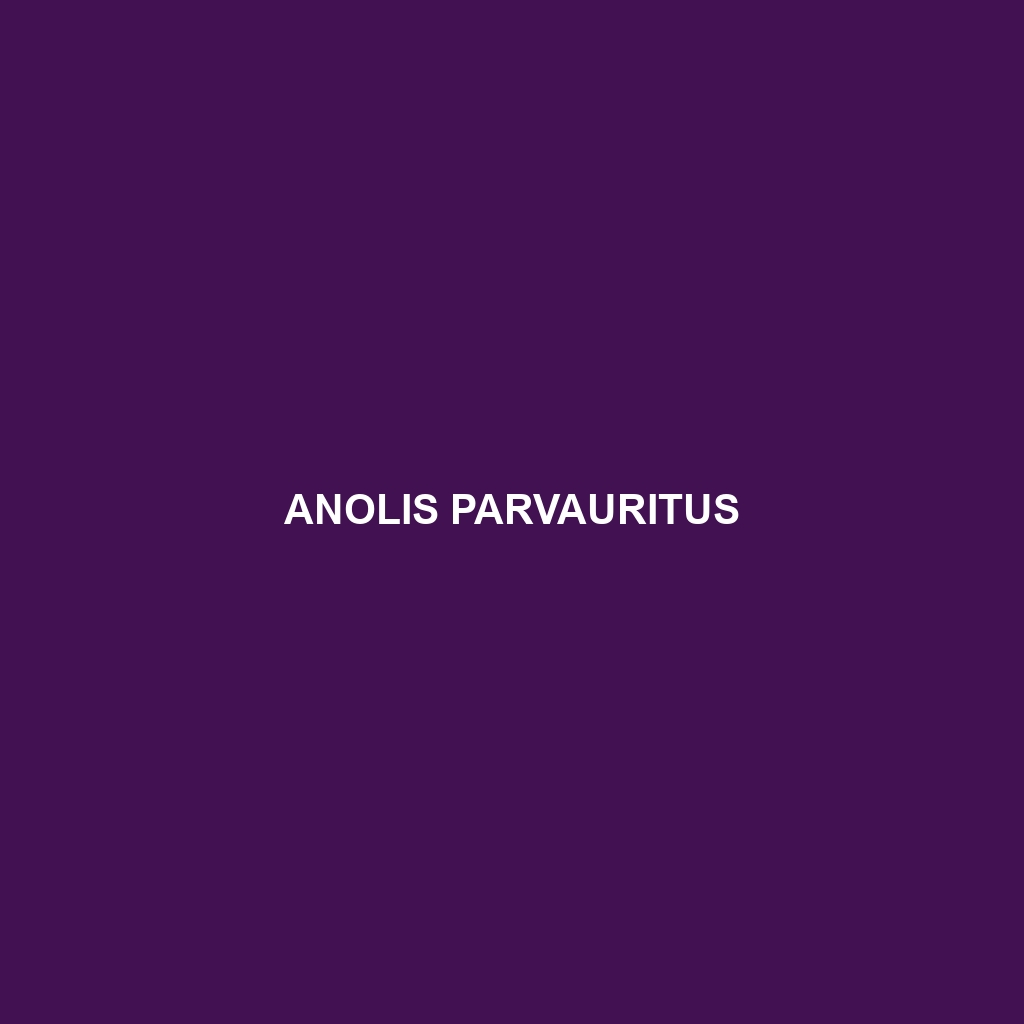Common Name: Anolis parvauritus
Scientific Name: Anolis parvauritus
Habitat:
Anolis parvauritus is primarily found in the lush rainforests of the Caribbean region, particularly within the islands of Puerto Rico and the Virgin Islands. This species thrives in various elevations, from lowland to montane forests, where it prefers humid and shady environments enriched with dense vegetation. The warm tropical climate provides an ideal habitat that supports its active lifestyle.
Physical Characteristics:
Anolis parvauritus is a small lizard, typically measuring between 3 to 5 inches in length. Its skin displays a vibrant array of colors, predominantly green with hints of brown or gray, which allows it to blend seamlessly into the leafy surroundings. Its distinctive features include elongated limbs and a long, slender tail that can easily detach if threatened. Males also exhibit a colorful dewlap, which is used in territorial displays and courtship behaviors.
Behavior:
This species is known for its arboreal habits, often seen darting along branches and basking in the sun. Anolis parvauritus is diurnal, engaging in most activities during daylight hours. They are territorial and can often be observed displaying to ward off rivals. Males perform elaborate courtship displays involving push-ups and dewlap extensions to attract females. Their quick reflexes and adept climbing skills make them proficient at escaping potential threats.
Diet:
The diet of Anolis parvauritus primarily consists of insects and other small invertebrates. Common food sources include ants, beetles, and flies, which they catch using their quick tongue. This insectivorous diet plays a crucial role in the ecosystem by helping to control pest populations, making them vital for maintaining ecological balance.
Reproduction:
Anolis parvauritus typically breeds during the warmer months, with peak activity in the spring and summer. The female lays small clutches of one to two eggs, which are deposited in warm, moist soil or leaf litter. After a few weeks, the eggs hatch into miniature versions of the adults, ready to fend for themselves in the dense underbrush.
Conservation Status:
According to the latest assessments, Anolis parvauritus is classified as **vulnerable** due to habitat destruction and climate change. The species’ reliance on specific forest habitats makes it particularly susceptible to environmental changes. Conservation efforts are essential for maintaining their populations and safeguarding their habitats.
Interesting Facts:
One fascinating aspect of Anolis parvauritus is its ability to change colors, much like a chameleon. This adaptation aids in camouflage against predators and helps in thermoregulation. Additionally, this species is a part of a larger group of anoles that exhibit an incredible diversity of forms and behaviors, making them a popular subject for scientific research.
Role in Ecosystem:
Anolis parvauritus plays a vital role in its ecosystem as a predator of insects and as prey for larger animals, facilitating energy transfer within food webs. Their presence helps maintain the balance of insect populations, while their interactions with other species contribute to the rich biodiversity of their rainforests. Preserving their habitat is crucial not only for their survival but for the health of the entire ecosystem.
